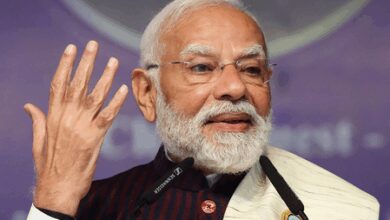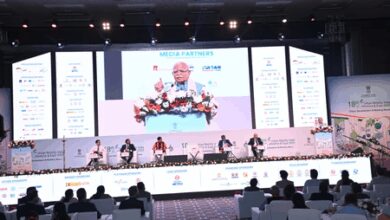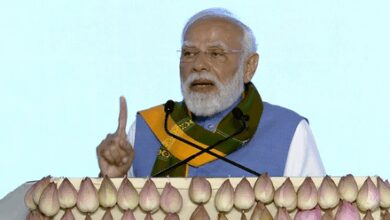India targets $500 billion electronics manufacturing by 2030
New Delhi, Oct 29 (IANS) Commerce Minister Piyush Goyal on Wednesday underscored the need to deepen domestic capabilities across the electronics value chain, noting that greater self-reliance in both finished products and components will be key to sustaining India’s export momentum and reducing import dependence.
He was speaking at the 4th Annual General Meeting (AGM) of the Mobile and Electronic Devices Export Promotion Council (MEDEPC) here.
India’s electronics manufacturing sector is witnessing a period of unprecedented transformation — propelled by visionary policy initiatives, record investments, and expanding global partnerships.
Aligned with the Prime Minister’s vision of achieving $500 billion in electronics manufacturing by 2030, India has rapidly positioned itself as a reliable global hub for electronics design, production, and exports.
India’s export performance reflects a remarkable growth story, with overall electronics exports surging by 41.9 per cent, reaching $22.2 billion during April–September 2025, compared to $15.6 billion in the same period last year.
Smartphone exports grew by an impressive 58 per cent, touching $13.38 billion, up from $8.47 billion in the corresponding period of 2024.
In FY 2024–25, India recorded $38.6 billion in electronics exports, a 32.6 per cent year-on-year increase, firmly establishing its expanding role in global value chains.
India now ranks as the third-largest smartphone exporter globally, a significant milestone in the country’s journey toward manufacturing leadership.
India’s deepening participation in global value chains (GVCs) underscores its transformation into a resilient and trusted manufacturing hub, offering stability and scale amid global supply chain realignments.
Increasing domestic sourcing of critical components — including batteries, chargers, camera and display modules — has further enhanced local value addition and self-reliance.
Under the guidance of the Ministry of Commerce and Industry and DGFT, the government has undertaken a series of measures to simplify trade operations and enhance export competitiveness.
Initiatives such as customs automation, single-window clearances, and export facilitation cells across major ports and industrial clusters have streamlined logistics and reduced compliance burdens for exporters.
Ongoing Free Trade Agreement (FTA) negotiations with the EU, UK, and EFTA aim to unlock new market access opportunities for Indian electronics manufacturers.
—IANS
na/






